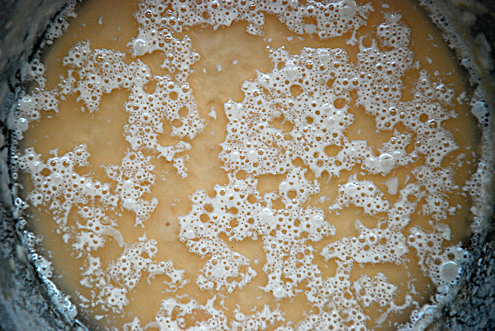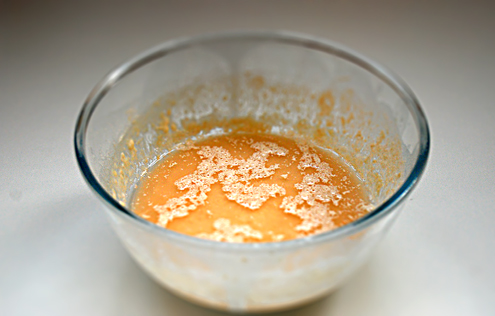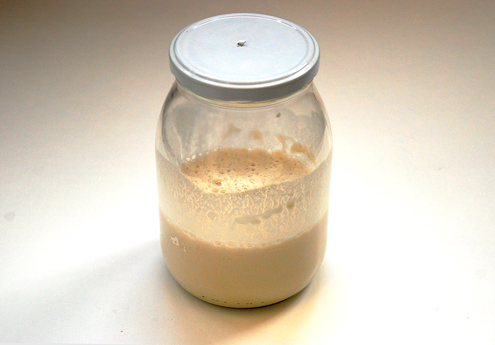If you believe the hype (well in my narrow Guardian reading world anyway) everyone in credit crunch UK is now an artisan baker spending their precious downtime in the kitchen fashioning crusty bloomers and squeezing out granary torpedoes. Generally (and childishly) if I find myself on a bandwagon I have the irrestable urge to jump off and find a more solitary mode of transport. So it was this week when I decided it was time to alight, become medieval, dispense with yeast altogether and get dirty with sourdough.

Preparation time: a few minutes + a few days for fermentation
Cooking time: none
Skill level: easy
Ingredients
- strong white flour – 1 cup – sorry to be so American, but this is that rare/only occasion when a cup is the best measurement to use
- warm water – 1 cup – see above
The first thing to remember is to avoid using anything metallic as this can react with the yeast growing in the sourdough starter.
Find a suitable glass or plastic container such as a bowl or tupperware (other brands are available – personally I prefer Lock’n’Lock).
Pour in the flour and water and mix together to form a paste/batter/childhood glue.
Cover with a tea towel and leave in a warm place.

The next day you have to feed your starter by removing and discarding half and replacing it with half a cup of flour and half a cup of water. Mix, cover and leave in a warm place.
Continue this process for a few days until it has started to bubble and froth and is giving out a pleasant sour beery smell.
Done.
Transfer to a large (gherkin/mayonnaise) jar, seal with the lid and put in the fridge. The yeast is alive and, like a pet, it needs to breathe, so make a hole in the lid.

Once in the fridge, the starter only needs to be fed once a week using the process described above. From time to time a dark liquid will form on the top – this is harmless and can either be stirred back in or poured away, depending on how moist your starter is.
If looked after your sourdough starter will outlive all of us.
It is now ready for bread making.

That’s the theory anyway, let’s see what happens in reality
- Day 1: Fed the starter – nothing to report so far.
- Day 2: Starter is now giving off a pungent whiff of vomit. Beginning to doubt the wisdom of this experiment.
- Day 3: A bubbly crust has now formed on top – smell now a heady mixture of beer and vomit. Looks worse but smells better.
- Day 4: A drunken night out meant the evening feeding was delayed to the following morning. No more bubbles and a layer of water on the top. The pukey smell is worse, although it could just be intensified by my hangover.
- Day 5: Looks like it is done. Bubbly cloudy water on top and the same unpleasant smell. Jarred it up and put it in the fridge.
Verdict: To be honest, the whole process seems slightly unpleasant.
Drink: Nothing Monday, a beer or two Tuesday, white on Wednesday, far too much Thursday, took it easy Friday.
Entertainment: Several episodes of 24, season 2. CTU is blown up and Jack’s daughter is as annoying as she was in the first series.


Hi
I love sourdough bread but can’t buy it locally, so I’m going to have to make it myself. It does sound like a bit of a faff but I’ll give it a go.